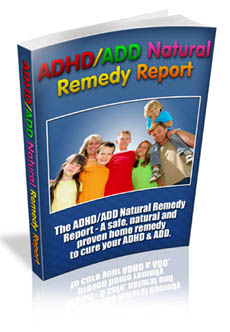Reading With ADD
Parents and caregivers of children with ADHD or ADD quite understandably find it difficult to cope with children who are constantly on the move, physically and mentally. Raising a child with attention problems can be very frustrating. Yet there is much that parents can do to create the kind of calm and supportive atmosphere that helps children engage and focus.
When a child pulls things off the shelves in a supermarket or runs around uncontrollably and others look on scornfully, the parents will feel anxious, angry, or embarrassed or all three. They may feel humiliation or fury at the child who is embarrassing them. Most of us in this situation would feel a strong visceral reaction.
Throwing More Fuel on the Fire
A very common reaction is to shout at the child to get him to stop. Yet the child who is out of control, running around, and overexcited may be acting that way because he is already overwhelmed by a noisy, crowded environment. A child who craves sensation may be running around and touching and grabbing everything because there are so many tempting sensory experiences in the supermarket or restaurant or toy store. The same child may be pushing other children to get in line first to go up the slide. If this happens a lot, the parents may despair at having a child who is "out of control." They may scold and get angry, adding to the turmoil. Afterward, they may feel deeply guilty and think, "Why haven't we been able to teach him how to behave?" In their eyes they have tried valiantly to try to teach the child to have control, but because of his biological makeup, it has been very, very hard to do. Reading With ADD
When parents' response to the child's behavior is to put their feelings directly into action without a lot of forethought and counter the child's impulsive actions with their own impulsive actions, this can only escalate the situation. This doesn't mean we shouldn't set limits or let the child know that there are consequences when he pushes another child, or when he goes out of control in the supermarket - we certainly should. But the first step is always to calm the child down and help him become regulated again.
To do this, we may need to help the child remove himself from the place that is leading to the frantic activity or aggression or disorganization. It may mean taking the child out of the supermarket and getting into the car, where the environment is calmer. At home, it may mean engaging in activities that are soothing for the child, like a rhythmic activity with music or some deep pressure applied to the back or the arms or the tummy - little firm touching. Or it may mean engaging in a quiet game in which you can begin modulating the child's behavior by going from fast to medium activity and then to a slow and superslow pace. This can help the child get back into a pattern of regulation.
Once everything is calm, then you can talk to the child, if he is verbal, about what happened. If the child is nonverbal because of other special-needs conditions, you may have to be intuitive about what happened, or you may have to suggest choices or use pictures so that the child can help you identify how he felt. Try to figure out together with the child what happened, and then if the child has crossed the line - hit or pushed, for example, not just yelled out loud or screamed - you want to let the child know there are consequences. There may be a time-out, missing or interrupting a favorite activity.
Then the child can learn that when he is feeling over-stimulated or losing control, he can tug at your arm to indicate he needs to leave the scene of the action. He can gradually become responsible for his actions. This may take many months or even years to accomplish, but it is an important and worthwhile goal. The principle here is to counterbalance the child's loss of control with calm words and gestures and help the child reorganize and regain focus and attention. Reading With ADD
All-or-Nothing, Polarized Thinking
A second common reaction that we all have as parents (and I have three children of my own, so I can testify from experience) is to get locked into polarize thinking. We blame the child and label the child in our minds, even if not consciously, or verbally. If we don't think it is appropriate to say this out loud, we think, "Johnnie is bad, and he is being bad deliberately" or "He's got ADHD and can't help it." We get locked into that mind-set. This constricts the compassion or the understanding we can show a child or the search for underlying cause such as sensory over- or underreactivity or processing difficulties.
With such a mind-set, a parent does not see the child's better moments or strengths. Not infrequently, we see that children with attention problems have a much harder time in one type of environment than another. At home they are little angels, but when they come to the busy pre-school they turn into hellions on wheels and cause a lot of trouble. In self-defense, a parent will think the child is all bad or excuse the behavior entirely and give the child no responsibility for his actions: "This is just the way he is, and he is not going to change. He was born this way, and I have to love him as he is." To learn more, you can check out Reading With ADD.


